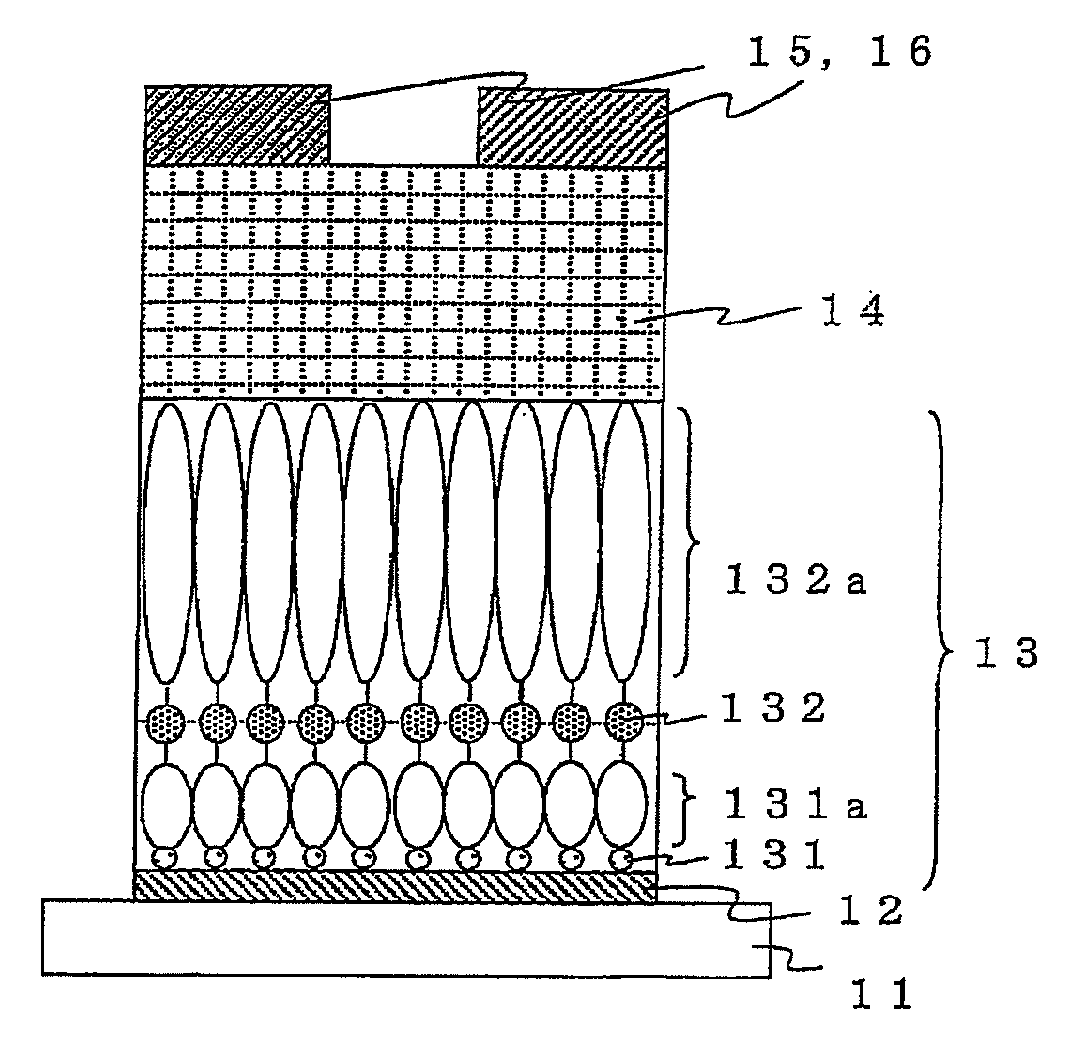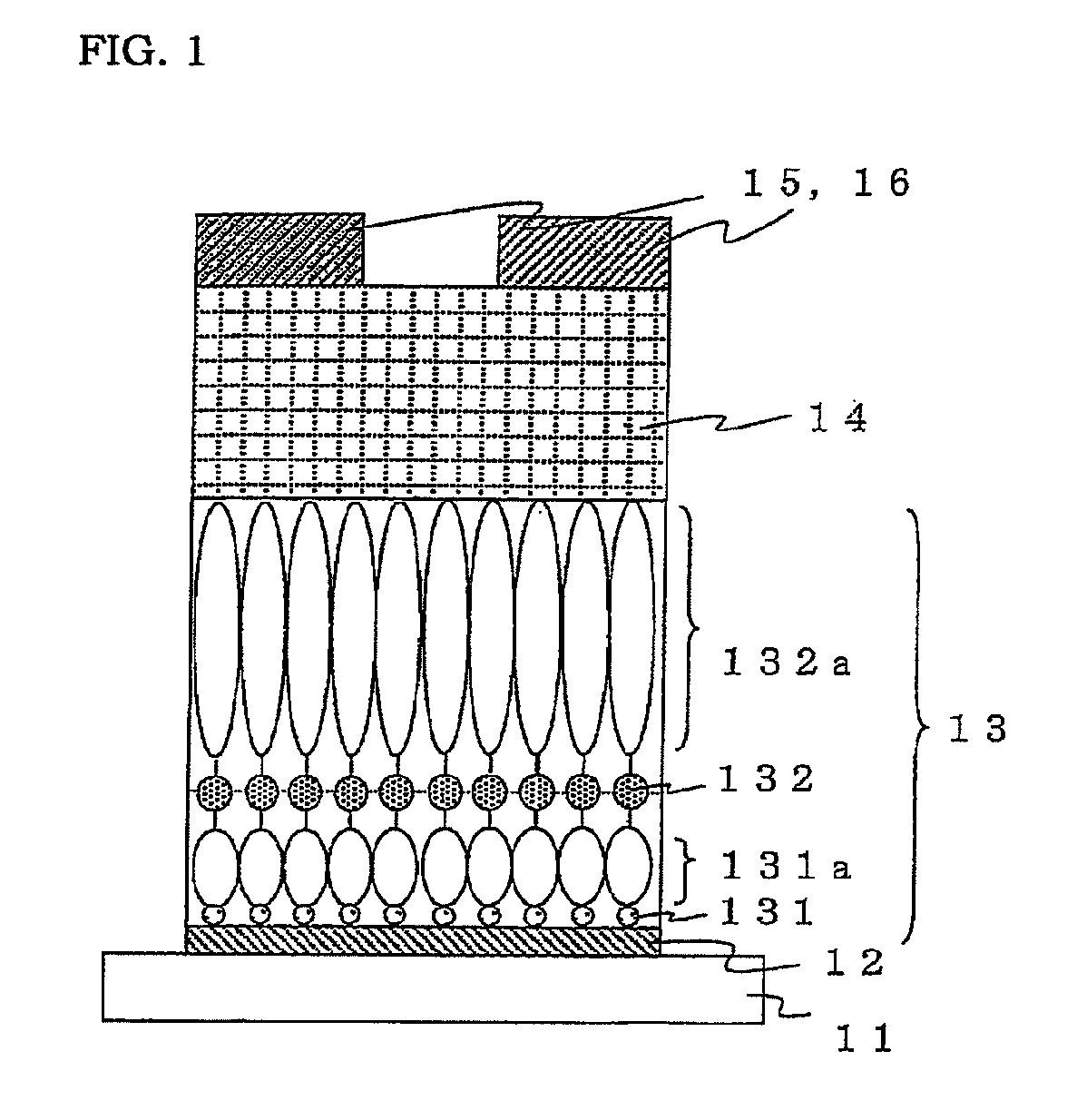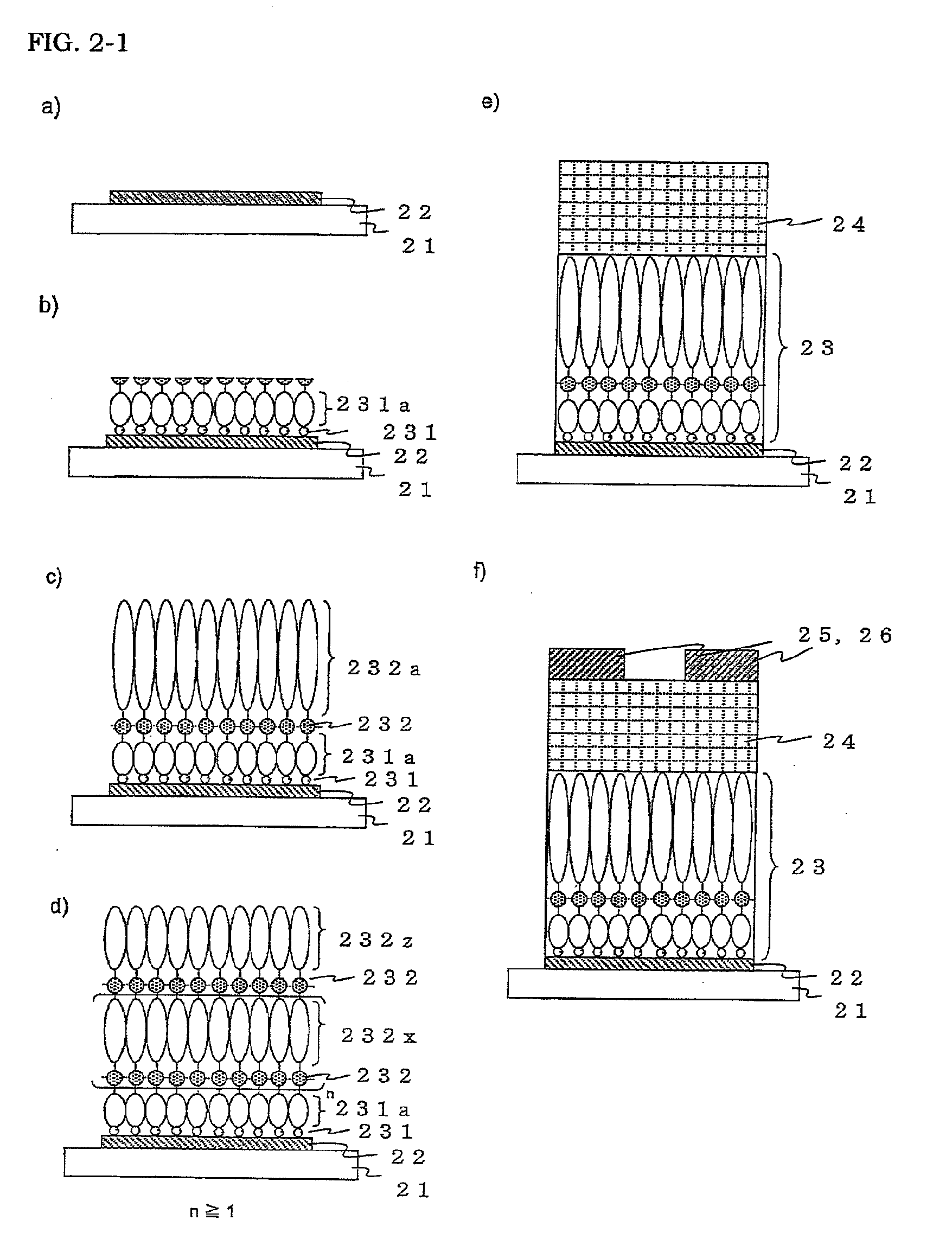Organic transistor and method for producing the same
- Summary
- Abstract
- Description
- Claims
- Application Information
AI Technical Summary
Benefits of technology
Problems solved by technology
Method used
Image
Examples
example 1
[0190]FIGS. 3a) to 3e) are drawings schematically illustrating a method for producing an organic transistor of the present invention.
[0191]First, 60 nm of aluminum was formed on a glass substrate 31 as a gate electrode 32 by vacuum deposition as illustrated in FIG. 3a). Next, the thus obtained was immersed in acetone to be delipidated by ultrasonic cleaning, and then a natural oxide film was formed on a surface of the aluminium formed into a film by oxygen plasma treatment, thereby exposing hydroxy groups on the surface.
[0192]Next, a first organic molecular layer 331a was formed through a first covalent bond 331 as illustrated in FIG. 3b). The substrate on which the electrode was formed and p-aminophenyltrimethoxysilane as an organic molecule for forming the first organic molecular layer were enclosed into a Teflon (registered trademark) vessel under a nitrogen atmosphere and heated in an oven at 100° C. for 120 minutes to form a first organic molecular layer having a phenyl backbon...
example 2
[0199]A gate electrode 42 and a first organic molecular layer 431a were formed on a glass substrate 41 as illustrated in FIGS. 4a) and b) in the same manner and using the same materials as in Example 1.
[0200]Next, a second organic molecular layer 432a was stacked on the first organic molecular layer 431a through a second covalent bond 432 as illustrated in FIG. 4c). Specifically, the substrate on which the first organic molecular layer was formed was immersed in 1 mmol / L of a methylene chloride solution of 6-phenylhexanoic acid as an organic molecule for forming the second organic molecular layer, and EDC was added thereto so that the concentration of the EDC would be 1 mmol / L and stirred at room temperature for 6 hours. Lastly, ultrasonic cleaning was carried out with chloroform to remove the 6-phenylhexanoic acid physically adsorbed on the substrate, thereby stacking an alkyl main chain formed through an amide bond and the second organic molecular layer having a phenyl group at an...
example 3
[0205]A first organic molecular layer 531a was formed on a gate electrode 52 on a glass substrate 51 through a first covalent bond 531 as illustrated in FIGS. 5a) and b) in the same manner and using the same materials as in Example 1.
[0206]Next, a second organic molecular layer 532a was stacked on the first organic molecular layer 531a through a second covalent bond 532 as illustrated in FIG. 5c). Specifically, the substrate on which the first organic molecular layer was formed was immersed in 1 mmol / L of an aqueous solution of glutaric acid, which is a bifunctional carboxylic acid as an organic molecule for forming the second organic molecular layer, and EDC was added thereto so that the concentration of the EDC would be 1 mmol / L and stirred at room temperature for 1 hour.
[0207]Next, a second organic molecular layer 532b was stacked on the second organic molecular layer 532a through the second covalent bond 532 as illustrated in FIG. 5d). Specifically, the substrate on which the se...
PUM
 Login to View More
Login to View More Abstract
Description
Claims
Application Information
 Login to View More
Login to View More - R&D
- Intellectual Property
- Life Sciences
- Materials
- Tech Scout
- Unparalleled Data Quality
- Higher Quality Content
- 60% Fewer Hallucinations
Browse by: Latest US Patents, China's latest patents, Technical Efficacy Thesaurus, Application Domain, Technology Topic, Popular Technical Reports.
© 2025 PatSnap. All rights reserved.Legal|Privacy policy|Modern Slavery Act Transparency Statement|Sitemap|About US| Contact US: help@patsnap.com



